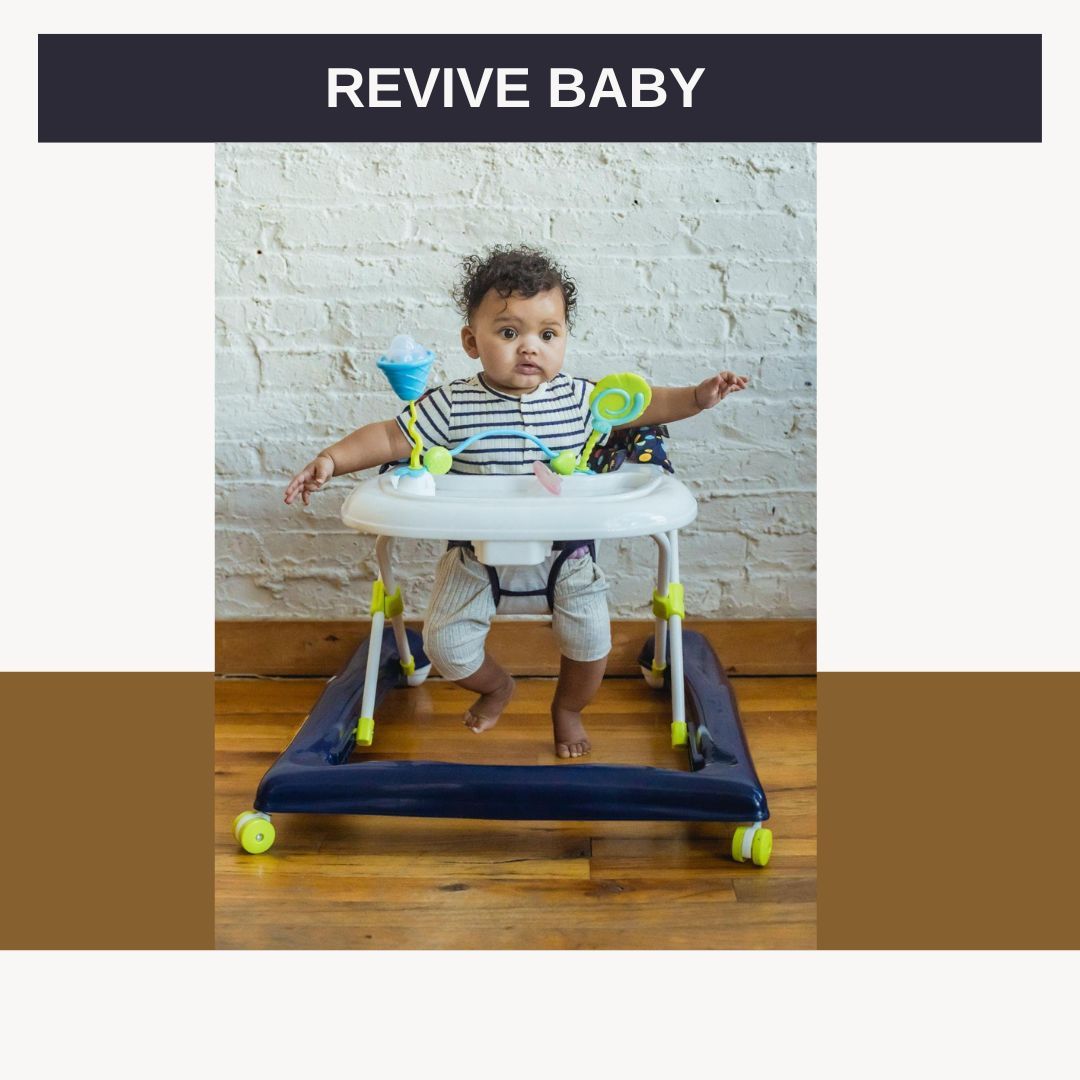There are several issues with baby walkers that the manufacturers and sellers of these products do not want you to be aware of.
While many happy families use them, you should be aware of the potential dangers despite their widespread use.
The abundance of baby gear on the market may overwhelm new parents. On the other hand, the baby walker is something that professionals advise against using.
A new study confirms that newborn walkers continue to put toddlers at risk of thousands of accidents yearly, despite recent safety regulations enacted in 2010. So let's delve deeper into this subject.
What Are Infant Walkers?
Between the ages of five and fifteen months, infant walkers are used. These are wheeled, circular devices with a suspended seat in the center for your infant to sit in. While "walking" in the suspended seat, the baby's feet may come into contact with the floor.
Once thought necessary for parents assisting their infants in learning to walk, these devices now pose significant safety risks and should be avoided at all costs.
Baby walkers' seats are suspended from the ceiling, and the wheels are spherical. Your infant can move freely because his or her feet can touch the ground while sitting.
Despite design improvements, thousands of infants are admitted to hospitals and clinics yearly after being injured in walker-related accidents such as falls down stairs or collisions with furniture.
Do Walkers Help Babies Walk Sooner?
According to research, infants who use walkers may take longer to master walking. Using a baby walker has been shown in studies to have the opposite effect and slow growth, with every 24 hours in the walker adding three days to the time it takes to learn to walk, and four days to the time it takes to learn to stand.
This is because a child using a baby walker is propped up in an upright position without having to do anything, as opposed to developing the ability to maintain an upright position through the acquisition of appropriate balance abilities.
Young children learn about walking mechanics by watching and mimicking their parents' steps. Because most walkers have trays, infants cannot see their lower body in motion, which may hinder their motor development.
Once you know the right age, you must consider the right age to take your baby to the beach.
A baby in a walker cannot crawl, pull themselves up, or cruise, which is all necessary skills for learning to walk.
Here are some helpful hints for getting your infant up and walking:
- Give your baby plenty of tummy time to help its core muscles grow.
- Hold your baby under your arms and bounce them on your thighs to help them develop leg strength.
- If your child is mobile, you can entice them to come closer by extending your hands while sitting or kneeling. Another option is to take their hand in yours as you walk with them.

Why Are Walkers Bad For Babies?
In 1997, new safety regulations were implemented in response to the high number of baby walker-related injuries. In recent years, the width of walkers has increased, making it more difficult to pass through standard doorways.
When one wheel is lower than the other three, the walker comes to a halt, much like a wheelchair does when one wheel begins to slide off the top of a step.
Despite these advancements, infant walkers still pose serious risks, including:
Accidents
A child who uses a walker is still at risk of falling steps or colliding with obstacles. Being in a walker allows her to grasp objects that were previously out of her reach, such as an oven or pot handle, which could result in serious injury.
Even if you keep a close eye on her, there's no guarantee she won't get into trouble because a child in a walker can cover more than three feet in one second. Most children injured while using walkers are injured even when an adult is present; they are too far away to stop their adorable movements as they rush toward the danger.
Delayed Walking Ability
Using a walker for extended periods may have a disadvantage. Some research has been conducted to determine whether or not infants who spend too much time on walkers develop motor skills more slowly than children who are free to explore their surroundings, but the results have been inconclusive.
If I Decide To Use A Baby Walker, What Should I Do?
Is There A Good Alternative To A Baby Walker?
Allowing your baby to crawl rather than using a baby walker promotes the crisscross pattern of brain development, in which the right side of the brain controls the movement of the right arm and leg, and the left side of the brain controls the direction of the left arm and leg.
This is not possible when using a baby walker. Parents can also use parent-assisted walkers, which look like standard walkers but do not contain the child. While using one of these, your child will still need to practice balance so that both feet are firmly planted on the floor.
Many parents use baby walkers to keep their children contained. Still, a stationary activity center is another option because it allows children to play safely without requiring them to roam around.
Doctors recommend stationary play gadgets as a safer option for parents who want five minutes to fold laundry or prepare supper. Putting your baby in a high chair is a simple way to keep them safe while you do other things.
A playpen or baby gates can also keep a young child safe. Doctors advise parents to keep their children in sight, even when employing their suggested strategies.
It is also critical to use an infant device that is appropriately sized for the baby. According to Doctors, the risk of a child falling over a play structure increases as they grow in size and stature. A particularly vigorous lunge could knock a child over if their waist is dangerously close to the top of the apparatus.

Conclusion
No evidence using a walker helps a kid learn how to walk. They do not aid a child's motor skills development or encourage them to walk any earlier than they would have without one.
Infants can't get the practice they need for pulling up, creeping, and crawling when using a walker.
Rather than a couch or bed, an activity center, bouncy seat, stationary rocker, swing, or play yard may provide a secure environment for your child to play in. Furthermore, make sure that anybody who will be supervising your kid is aware of the risks associated with walkers.








